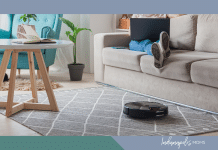 My only goal for 2025? Buy and own less stuff.
My only goal for 2025? Buy and own less stuff.
Listen, I come from a long line of distinguished shoppers. Both of my grandmothers loved to buy, whether from a local department store or a weekend garage sale. My mom, whose mother was an expert seamstress and handmade all her clothes until she went to college, claims the trauma of being unable to buy new clothes like her friends turned her into the compulsive shopper she is today. (As Phyllis Nefler would say, my mother has a black belt in shopping. I know no one better.) And like any good trauma skill passed down from generation to generation, I’ve carried on the shopping traditions of my family’s matriarchs via weekly Target pickups and online purchases. Whether it’s the latest in skincare or new clothes for my daughter, I am an influencer’s dream.
However, despite the fact I love to declutter and organize regularly, my shopping problem has significantly outpaced these efforts in the last few years. This means we are currently three humans and one animal living in a four-bedroom house without a single empty closet, drawer, or shelf and a garage that is a dumping ground for random things. As someone whose mental health is impacted by her physical space, I have hit a point where this is truly unsustainable. I have so much trouble relaxing and enjoying time with my family because there’s laundry to fold, toys to pick up, and errands to run. While I know some of this is just life as a mom, The Life On Purpose Movement asks, “What’s the point of life if you’re too overwhelmed managing stuff to enjoy it?” Instead, less stuff will mean more time to just live.
Another epiphany occurred after watching Buy Now: The Shopping Conspiracy on Netflix. The documentary focuses on modern consumerism and how it negatively impacts our lives and planet. From fast fashion (guilty!) to tech that can’t be repaired, our society is constantly being manipulated into buying more … and more … and more … until the excess is shipped around the world to contaminate waterways, beaches, and other countries. I know I’m only one person, and overconsumption is a global crisis, but I want to do my part for my daughter’s and our planet’s future.
With that as a foundation, I’ve decided to make my only goal of 2025 to buy and own less stuff. And to accomplish that, here are the consumption rules I’ve set for myself:
No-Buy January
For the month of January, I will not purchase any clothes, shoes, or accessories for myself or my daughter. Trust me, we have plenty, and I want to start the year off with a bang.
Use What I Have
I will finish the skincare, haircare, and makeup I already own before buying a new product. Ask yourself how many bottles of shampoo you own right now. I have four different kinds in my shower as we speak and will use those completely before purchasing more.
Only Wish List Purchases
I will keep a wish list for clothing, makeup and skincare, home decor, and other items and wait at least two weeks before purchasing anything. I’m hoping this will curb those impulse purchases (looking at you, social media!) and ensure I am intentional about what I buy.
Buy Local When Possible
I will do my best to buy from local stores and online small businesses first. For a variety of reasons that are too deep to discuss here, I want to avoid Amazon altogether and other huge online retailers as much as possible. I’m not delusional enough to think I can get by without Target. However, at the very least, I can buy directly from a store employing people from my community instead of online.
Second-Hand First
I will buy second-hand when possible. While I know this will take up more time than a couple of clicks and delivery directly to my porch, I am looking forward to the thrill of the hunt and lessening my environmental impact. I hope to find unique items that everyone else didn’t also grab from the Target Dollar Spot.
Quality, Not Quantity
I will focus on buying quality clothing. I’ve often hesitated about spending too much on a single clothing item but then bought multiple versions I like less for about the same price. Or I purchase fast fashion that falls apart or looks awful after a few washes. Moving forward, I want to focus on quality by paying attention to materials (cotton, wool and other organic materials instead of plastics!) and garment construction more than the price.
One In, One Out
I will find something to sell, donate, or toss for any item that comes in. For example, if I buy another pair of black workout leggings, it should be because the ones I have are past their prime, or I don’t wear them and need to find them a new home.
I’m realistic enough to know I will likely fail at strictly following these rules for the entire year. I also know certain circumstances may call for exceptions, like vacations, something breaking, or my daughter coming home from school with another hole in her leggings. (Seriously, how does she manage to do it?) However, even if I succeed 50% of the time, it means I’ll have been much more intentional with my purchases overall. I hope this translates to buying and owning less while spending more time on the things that matter.









Love this, Brynna!
Comments are closed.